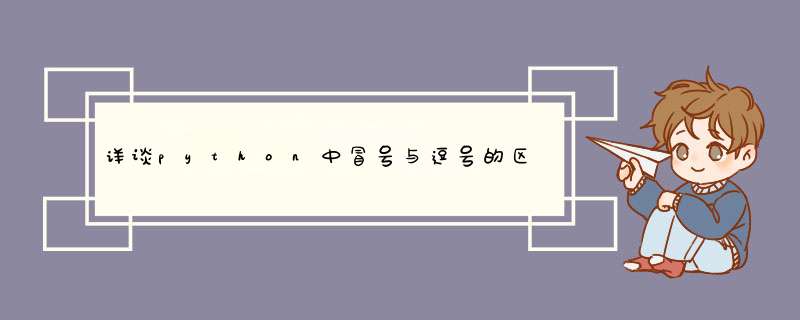
注意ifwhilefor等(或函数定义)语句在结尾处包含一个冒号——我们通过它告诉python下面跟着一个语句块。
--------------冒号的用法
if guess == number: print 'Congratulations, you guessed it.' # New block starts here print "(but you do not win any prizes!)" # New block ends here elif guess < color="#ff0000">: print 'No, it is a little higher than that' # Another block # You can do whatever you want in a block ... else: print 'No, it is a little lower than that' -------------- def printMax(x, y): '''输出最大的2个数. 2个数值必需是整数.''' x = int(x) # convert to integers, if possible y = int(y) if x > y: print x, 'is maximum' else: print y, 'is maximum' ========逗号的特殊用途 for item in shoplist: print item,
我们在print语句的结尾使用了一个 逗号 来消除每个print语句自动打印的换行符。这样做有点难看,不过确实简单有效。
以上这篇详谈python中冒号与逗号的区别就是小编分享给大家的全部内容了,希望能给大家一个参考,也希望大家多多支持考高分网。
欢迎分享,转载请注明来源:内存溢出

 微信扫一扫
微信扫一扫
 支付宝扫一扫
支付宝扫一扫
评论列表(0条)